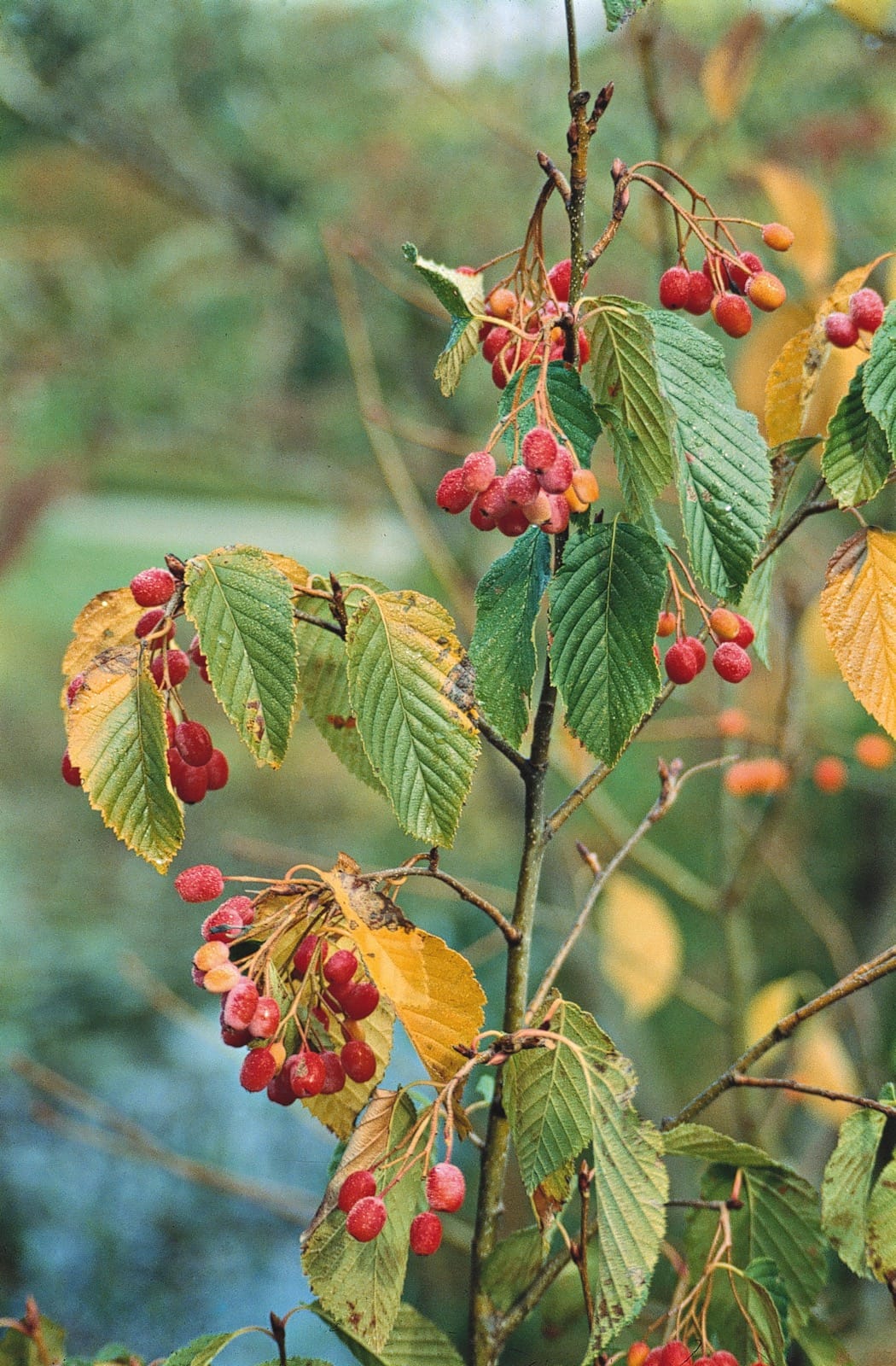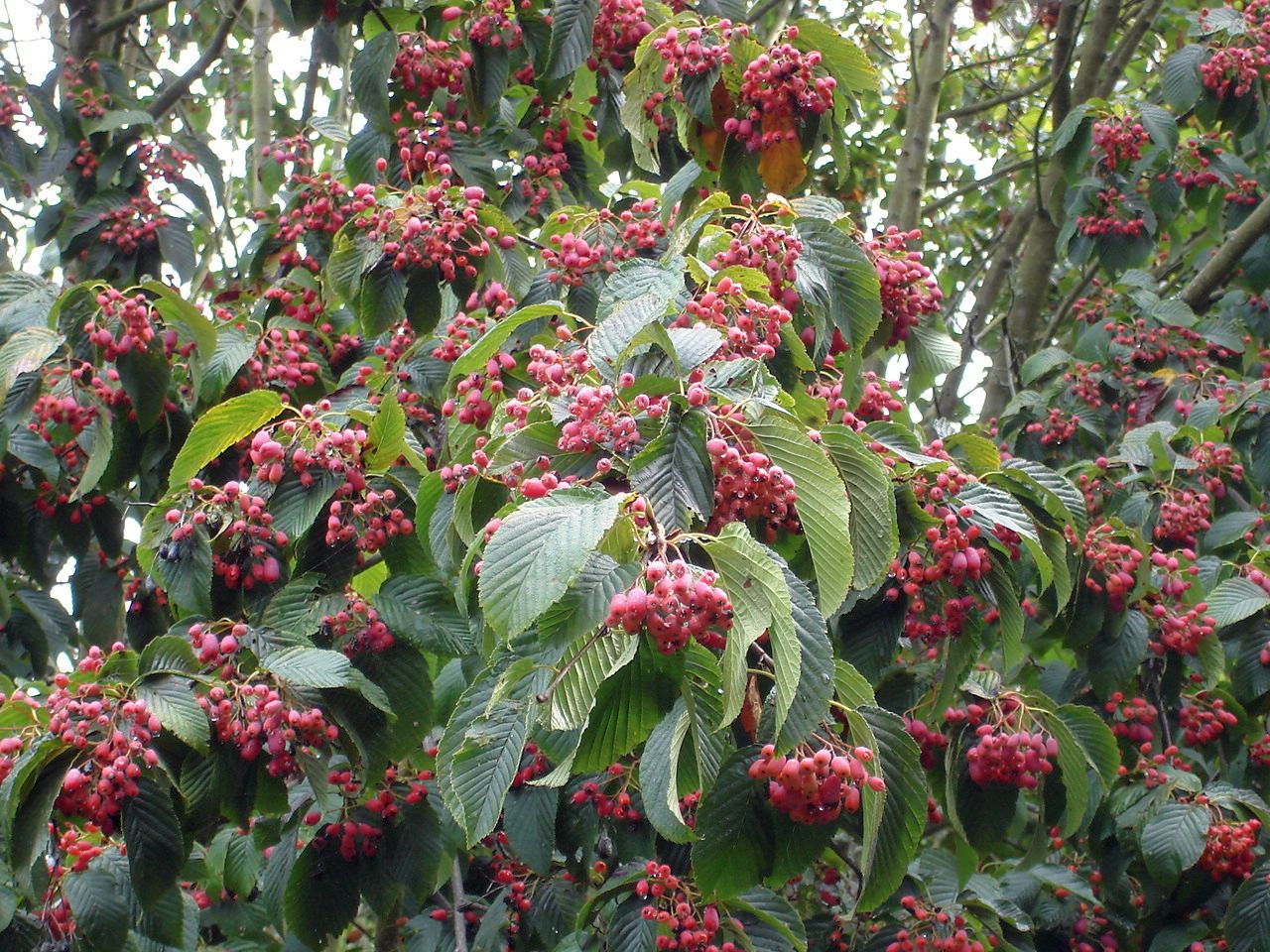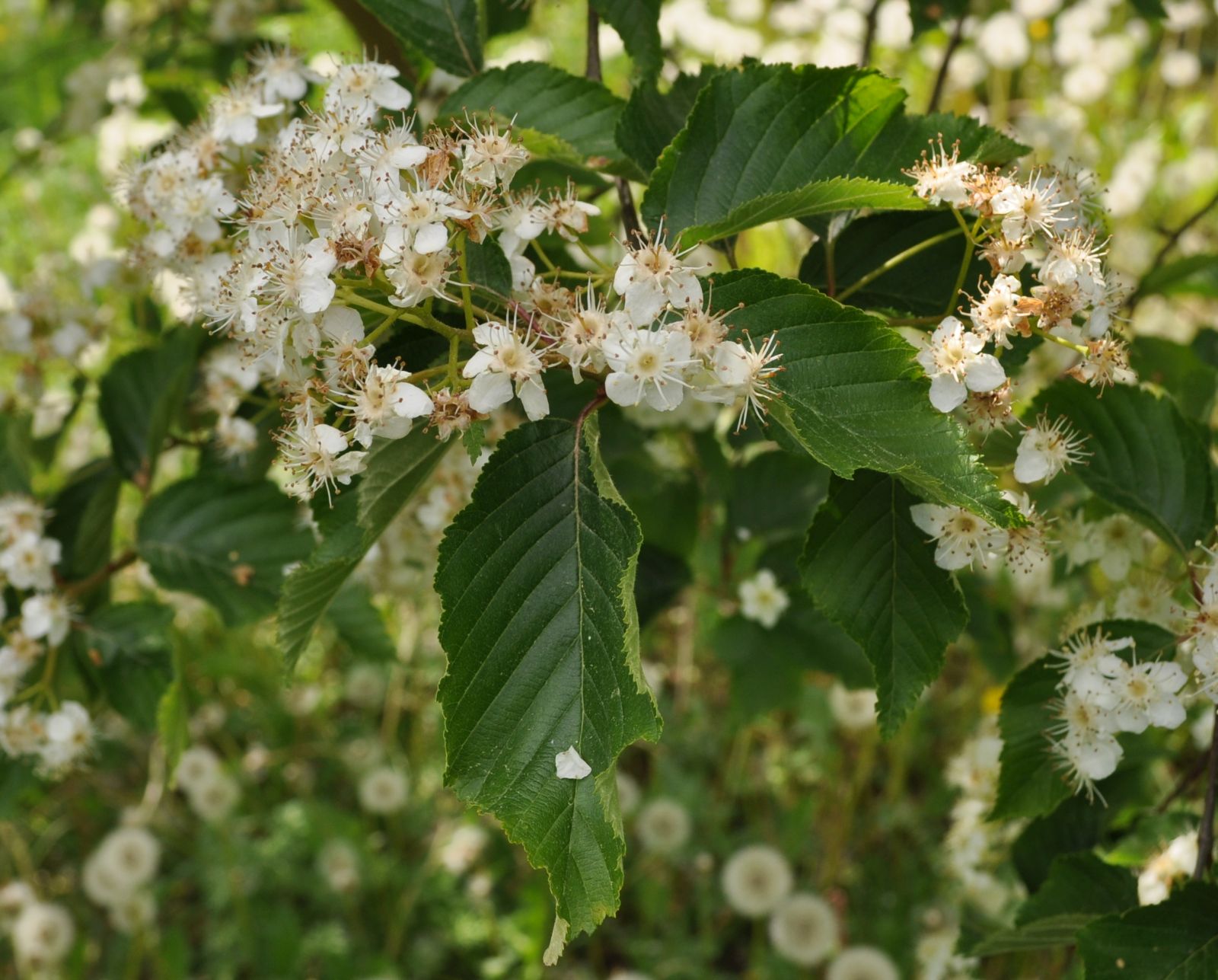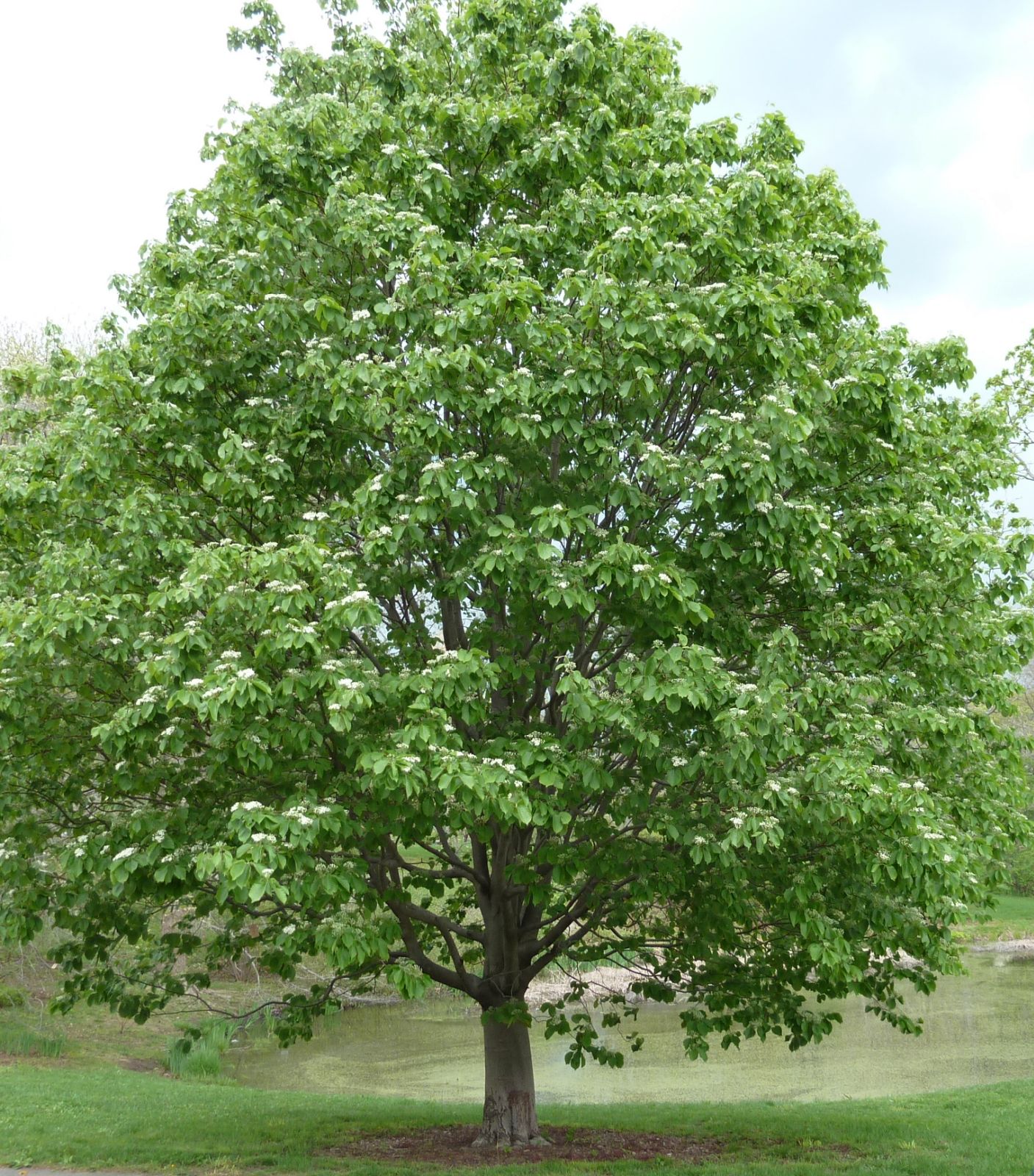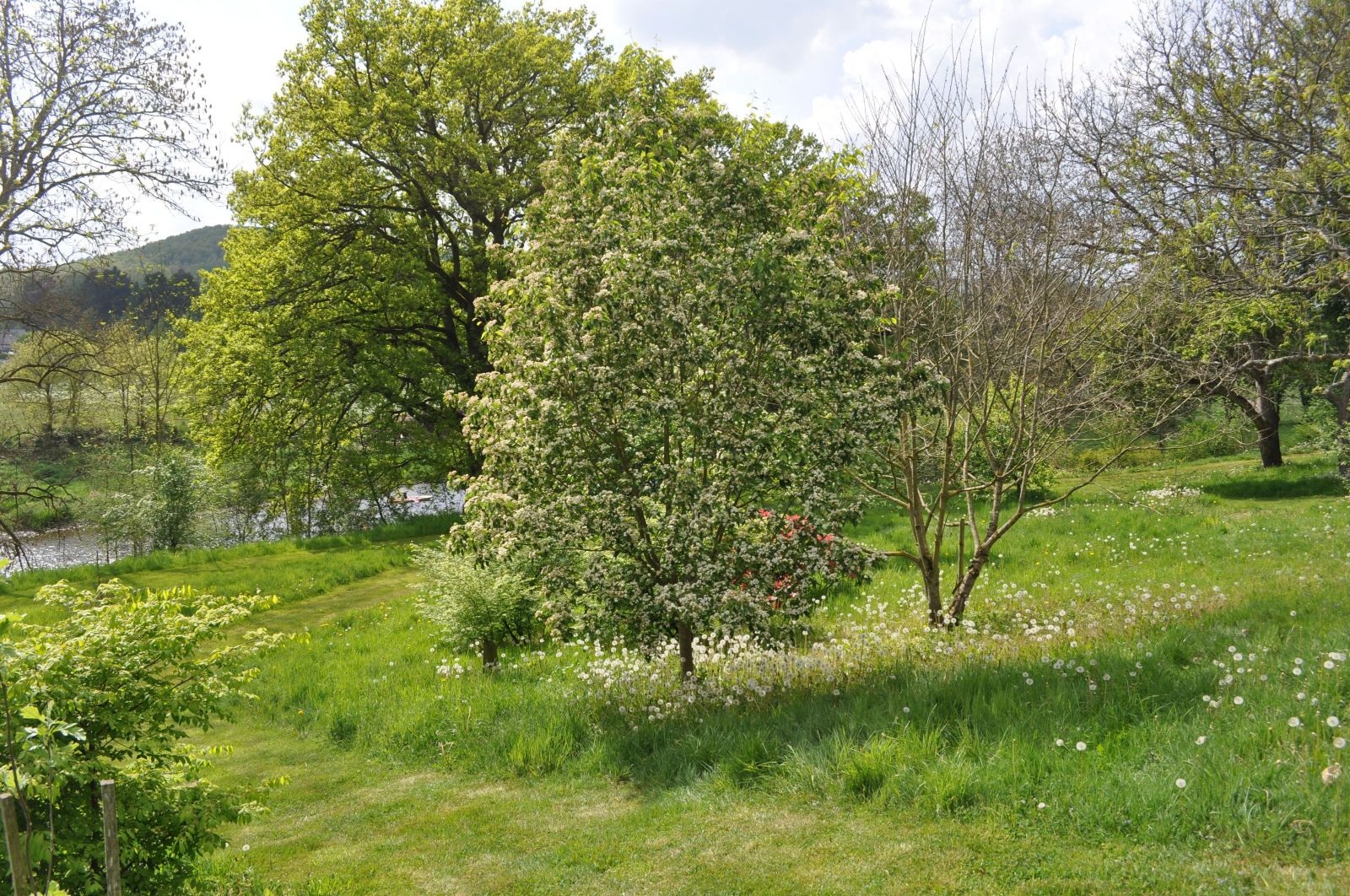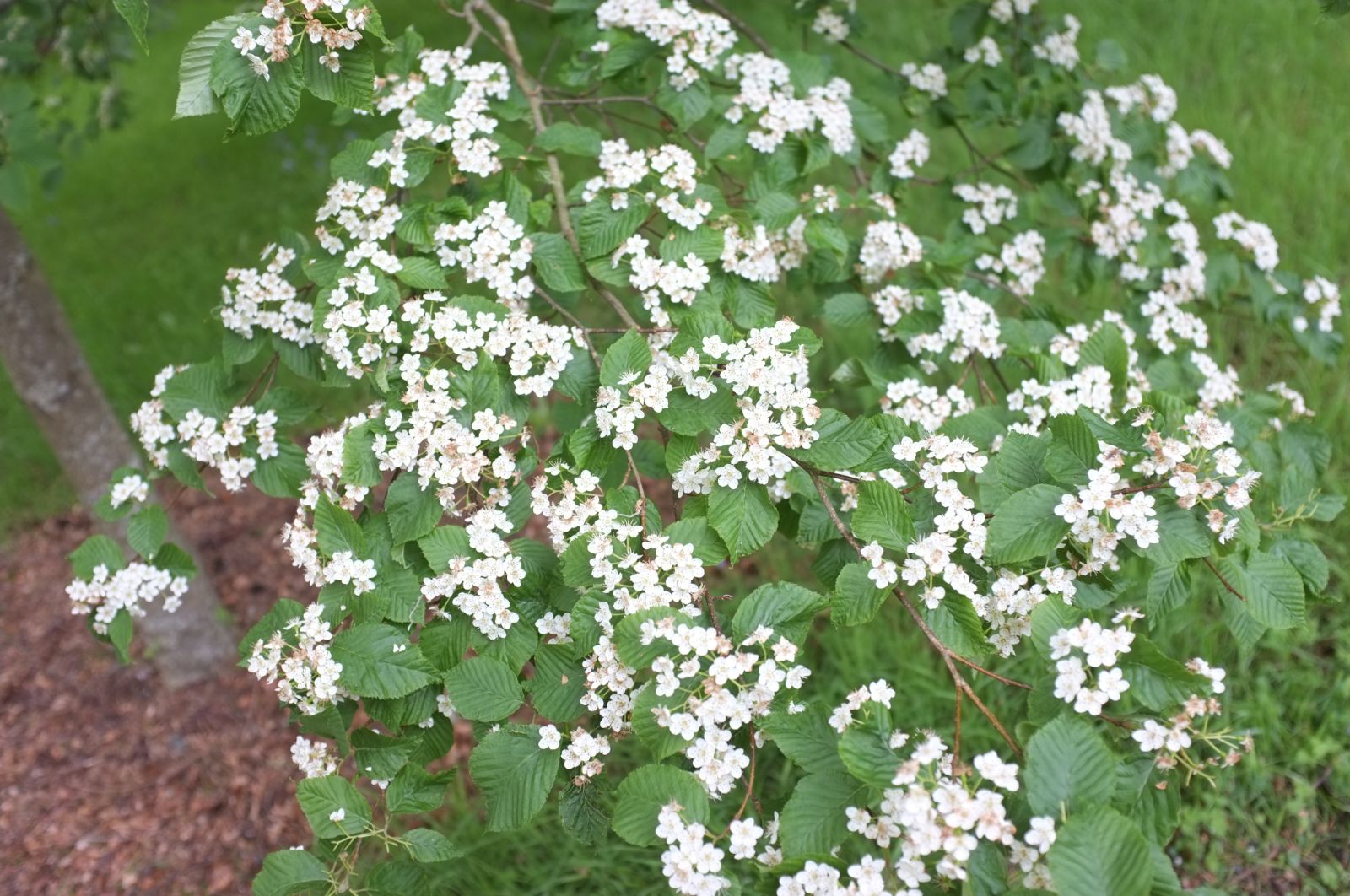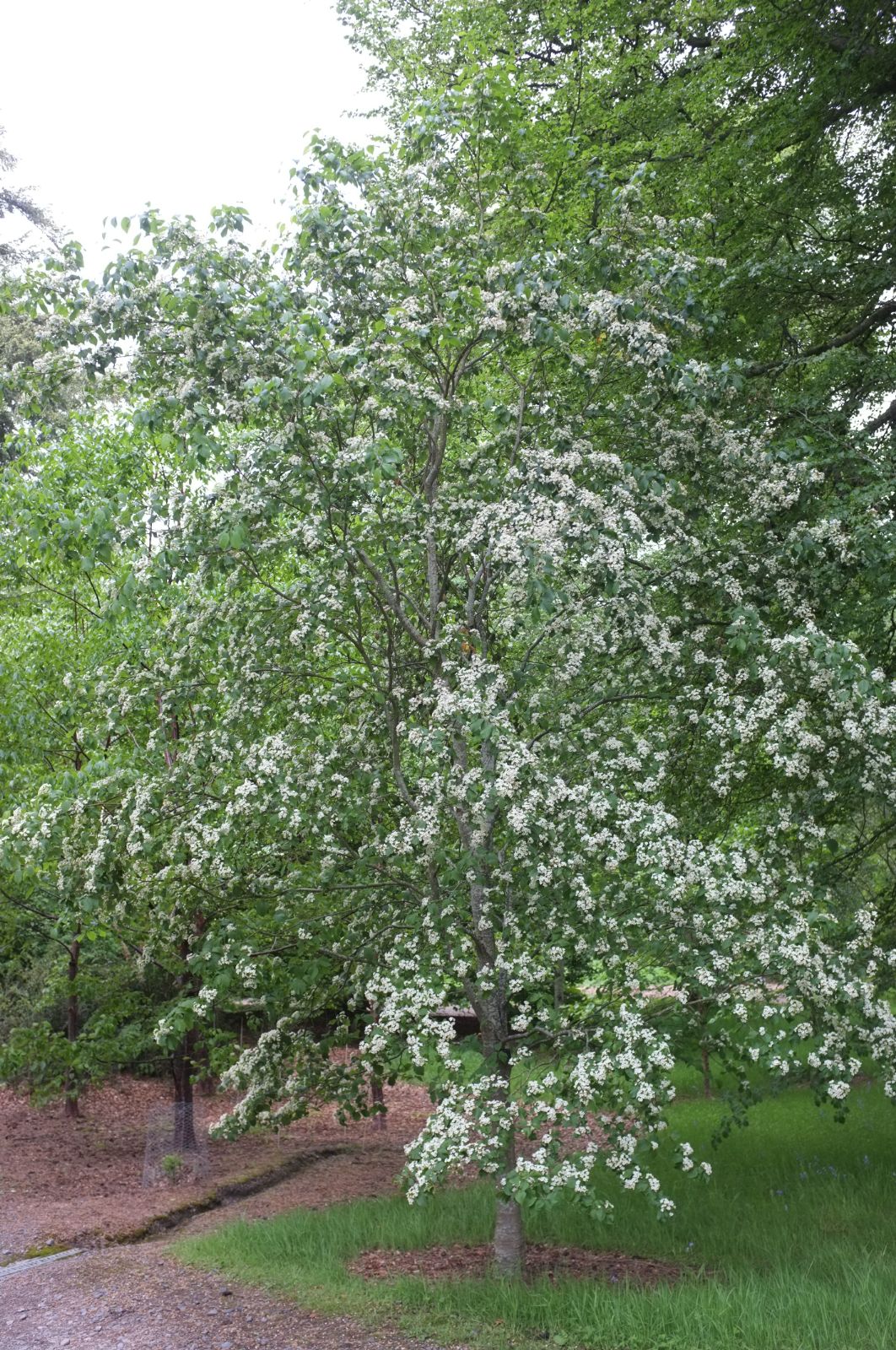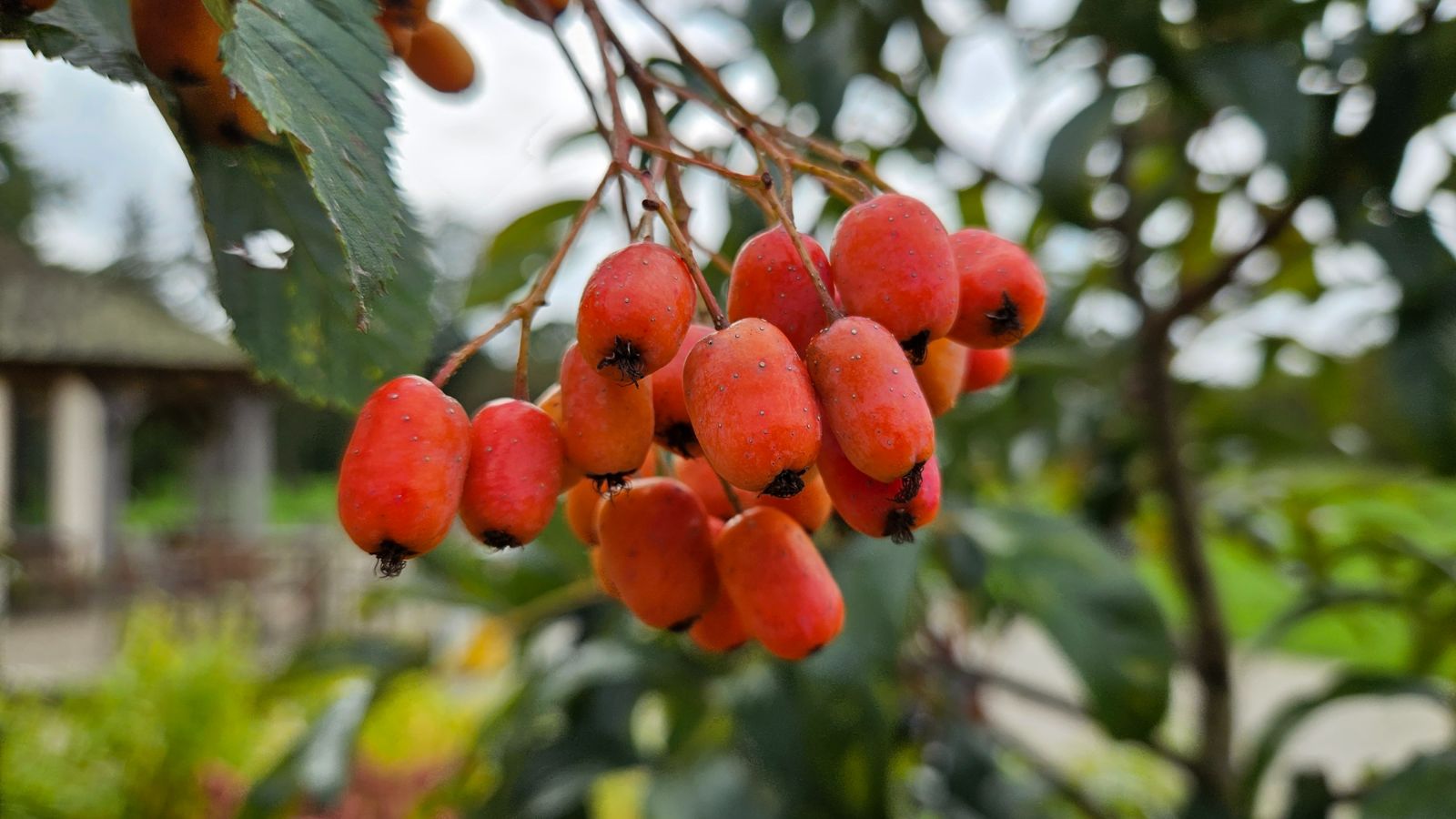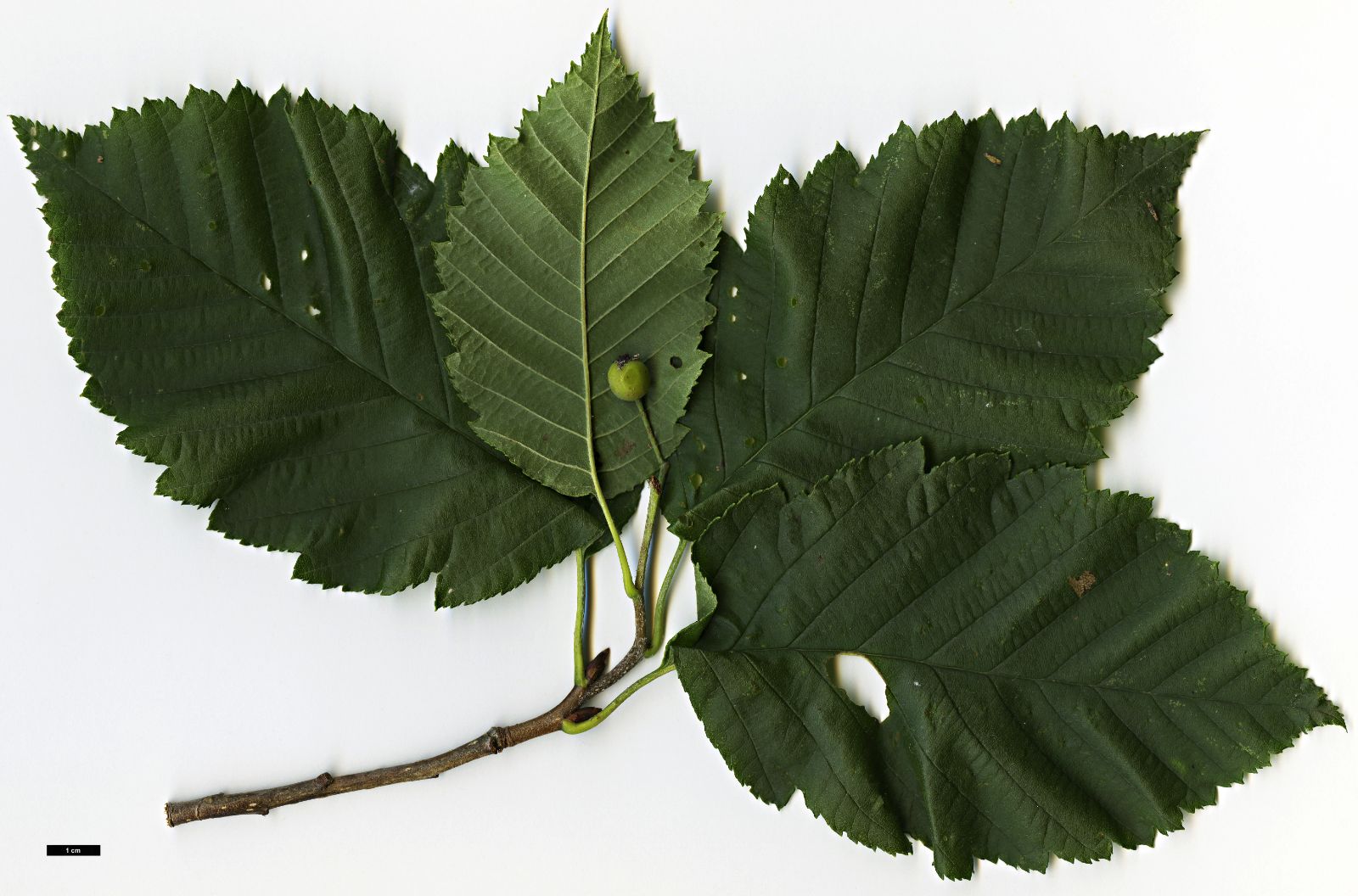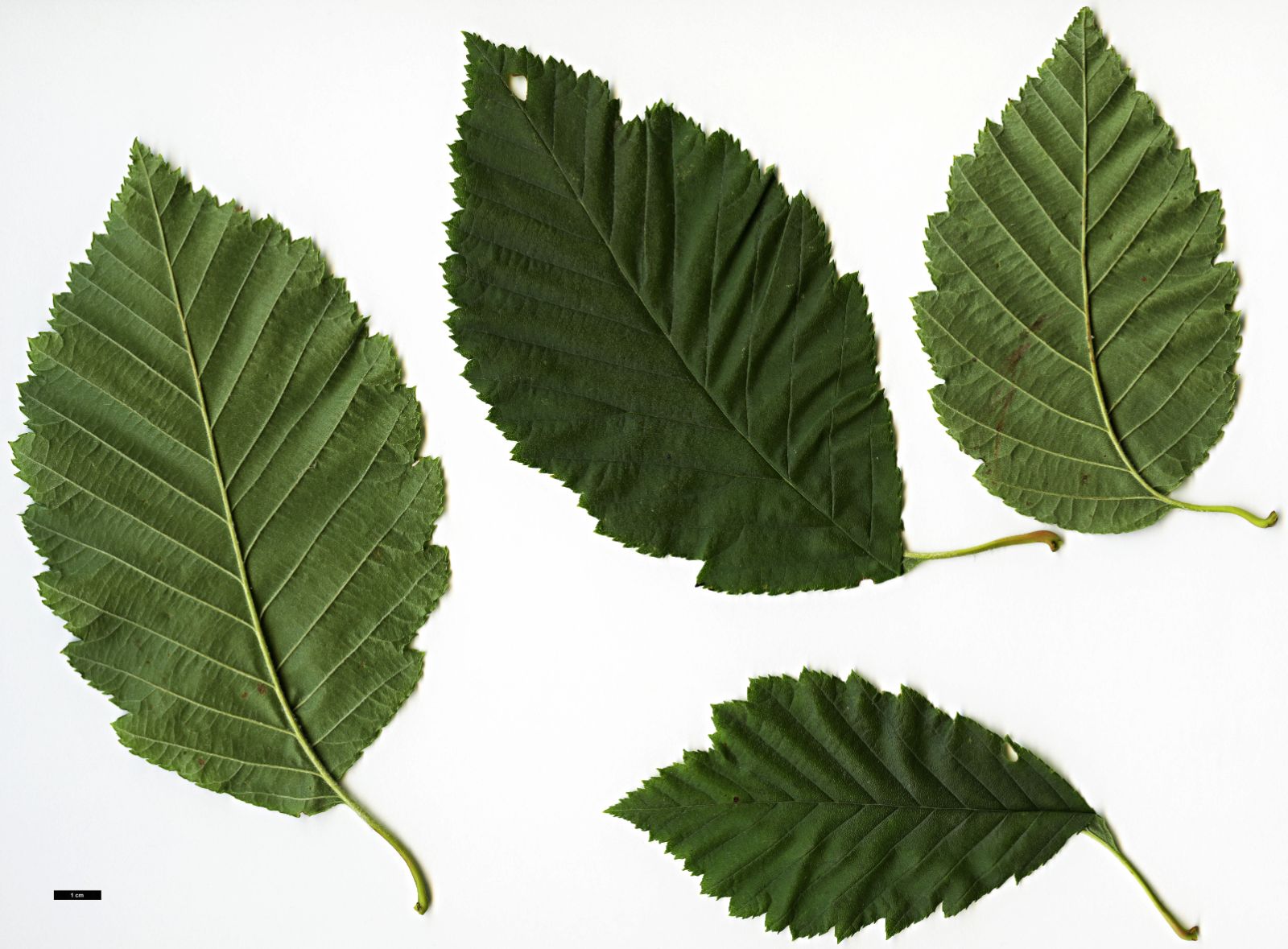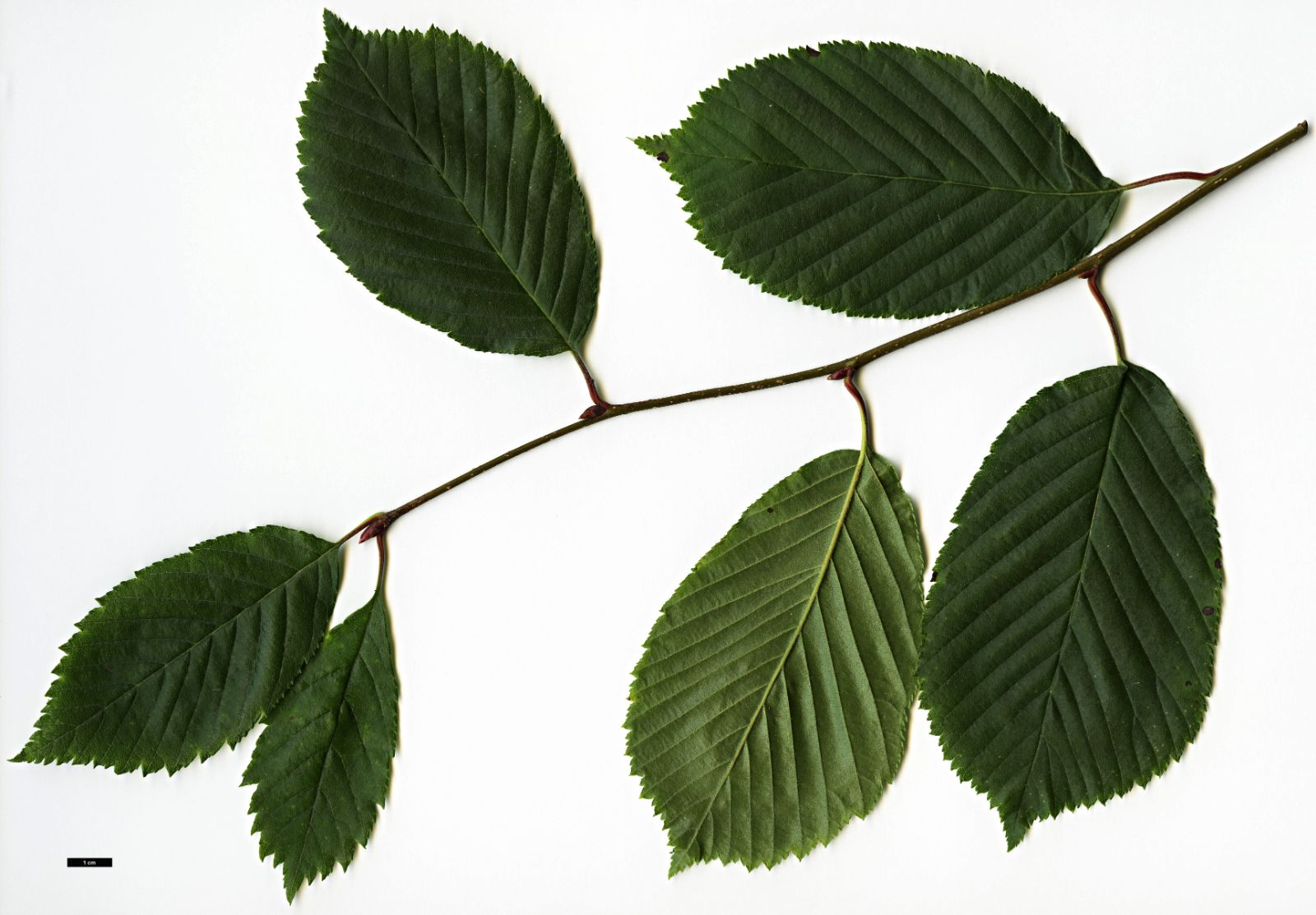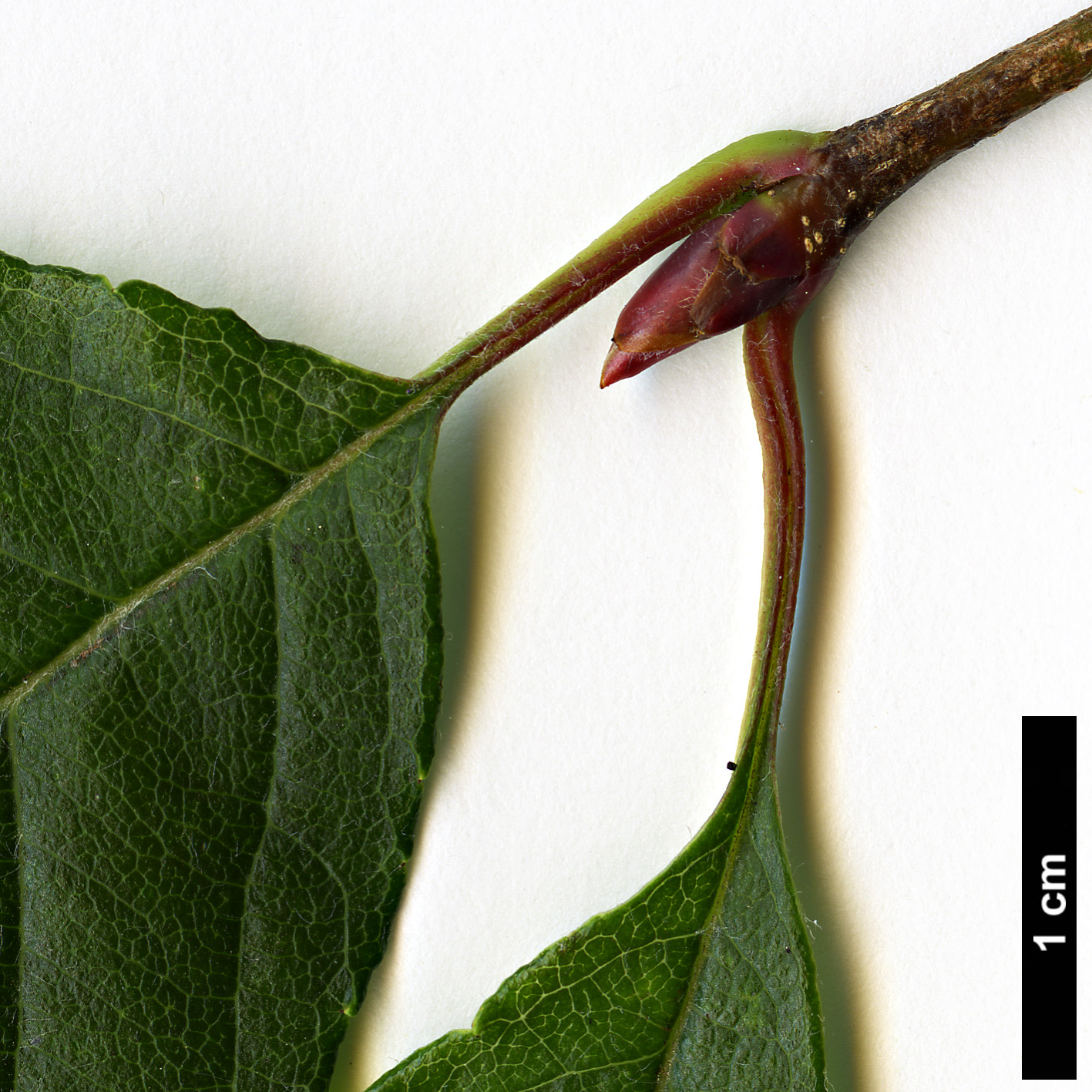Alniaria yuana
Credits
Article from New Trees by John Grimshaw & Ross Bayton
Recommended citation
'Alniaria yuana' from the website Trees and Shrubs Online (treesandshrubsonline.
Genus
Synonyms
- Aria yuana (Spongberg) H. Ohashi & H. Iketani
- Micromeles yuana (Spongberg) Mezhenskyj
- Pyrus yuana (Spongberg) M.F.Fay & Christenh.
- Sorbus yuana Spongberg
Editorial Note
The text below is from New Trees (Grimshaw & Bayton 2009) who discussed this taxon under the name Aria yuana. We have created this hybrid article – New Trees text under the correct modern name, with appropriate synonymy – whilst we await sponsorship to enable a full revision of this genus to be written. We are re-organising the Sorbus sensu lato articles in this way to enable a new revision of Sorbus sensu stricto to commence in 2023, and to bring the nomenclature of this complex group of plants up to date in line with modern treatments.
TC, August 2023.
Tree to 15 m. Branchlets reddish brown to purple or black, smooth, with a few lenticels. Buds glabrous, 0.6–1 cm long. Leaves 8.5–11 × 6–7 cm, elliptic to broadly ovate, both surfaces usually glabrous or with whitish hairs in the vein axils of the lower surface, 11–14 secondary veins on each side of the midrib, craspedodromous, margins double-serrate or with shallow lobes, apex short-acuminate; petiole 2.3–2.5 cm long, glabrous. Inflorescences terminal, to 20 cm diameter, corymbose, glabrous. Flowers white, hermaphrodite; sepals acute, persistent. Fruit reddish, 1–1.4 × 0.7–1.2 cm, sparsely covered with small lenticels. Flowering April to June, fruiting July to September (China). Gu et al. 2003, Aldasoro et al. 2004. Distribution CHINA: Hubei, Shaanxi, Sichuan. Habitat Forest margins, steep slopes, between 2000 and 2400 m asl. USDA Hardiness Zone 5–6. Conservation status Not evaluated (IUCN), but considered to be rare by Flora of China. Illustration Wharton et al. 2005; NT822.
Aria yuana was one of the trophies of the 1980 Sino-American Botanical Expedition, collected in the Shennongjia Forest District of Hubei (SABE 1555) and later named after Professor T.T. Yu (1908–1986), who had a long and brilliant career in botany and horticulture. If it is to be given a vernacular name in English it should therefore be Yu’s Whitebeam, not the strange ‘Yuan Whitebeam’ already in use by some (Wharton et al. 2005). It is a truly notable introduction, but has still not been widely distributed beyond botanical gardens on both sides of the Atlantic. It is best known from the specimens in the Arnold Arboretum grown from the original seed, now forming shapely trees that have so far avoided fireblight and other diseases and problems of sorbi in North America, as well as proving fully hardy in Massachusetts (Spongberg 1991). They branch freely above the base, the branches ascending stiffly to form neatly shaped conical crowns. The leaves are attractive throughout the summer, being strongly ribbed and dark green with a pale underside, then turning golden-yellow in time to partner the richly red fruits in autumn. The flowers are also a good feature, being abundantly produced and a good clean white. The species is self-incompatible and needs a friend for fertilisation, but in the absence of pollination is capable of producing small, infertile parthenocarpic fruits that are still attractive. When a group of clones are grown together, as at the Arnold Arboretum, or at Ness where there are several specimens raised from seed supplied by Stephen Spongberg, the fruits are much larger and more spectacular (and contain fertile seed) (H. McAllister, pers. comm. 2007). Aria yuana deserves to be widely planted. When first collected it was thought to be A. zahlbruckneri, to which it is evidently closely related but from which it differs in having larger, broader leaves with less regularly toothed margins, and larger fruits (Gu et al. 2003). This and related species could conceivably hybridise with other species grown nearby, so seedlings should be checked with care.

